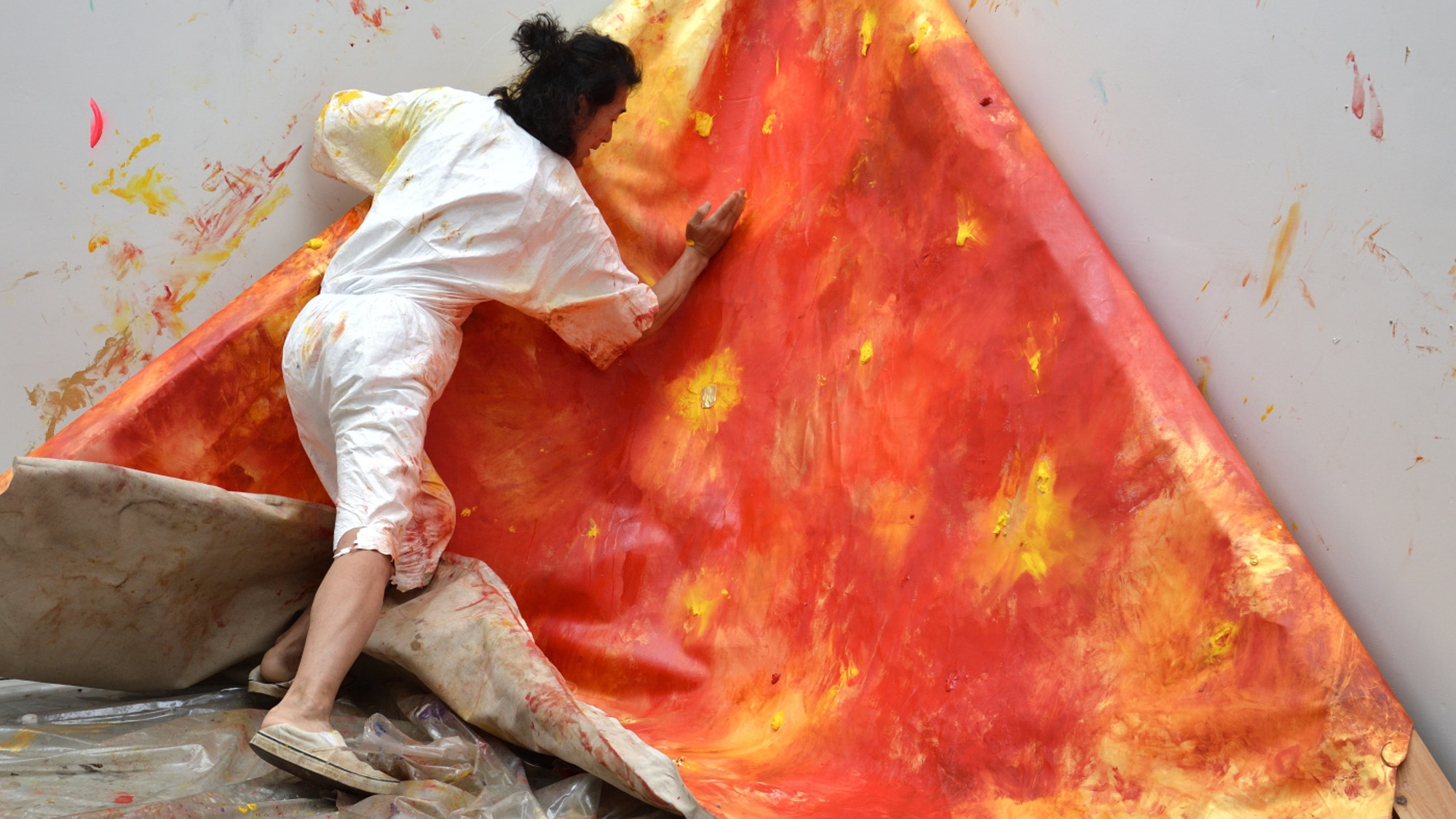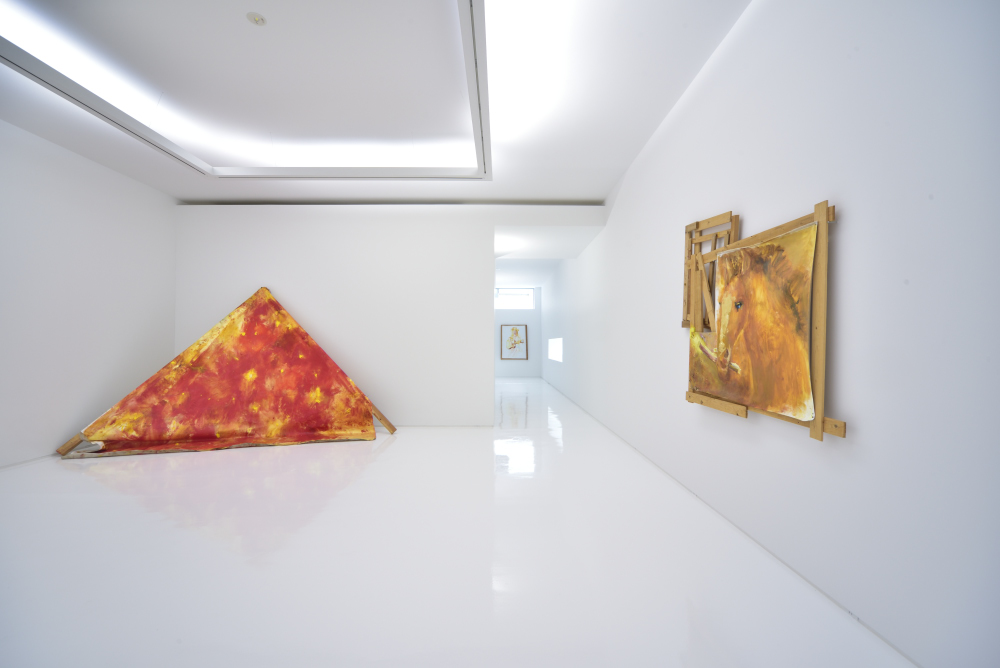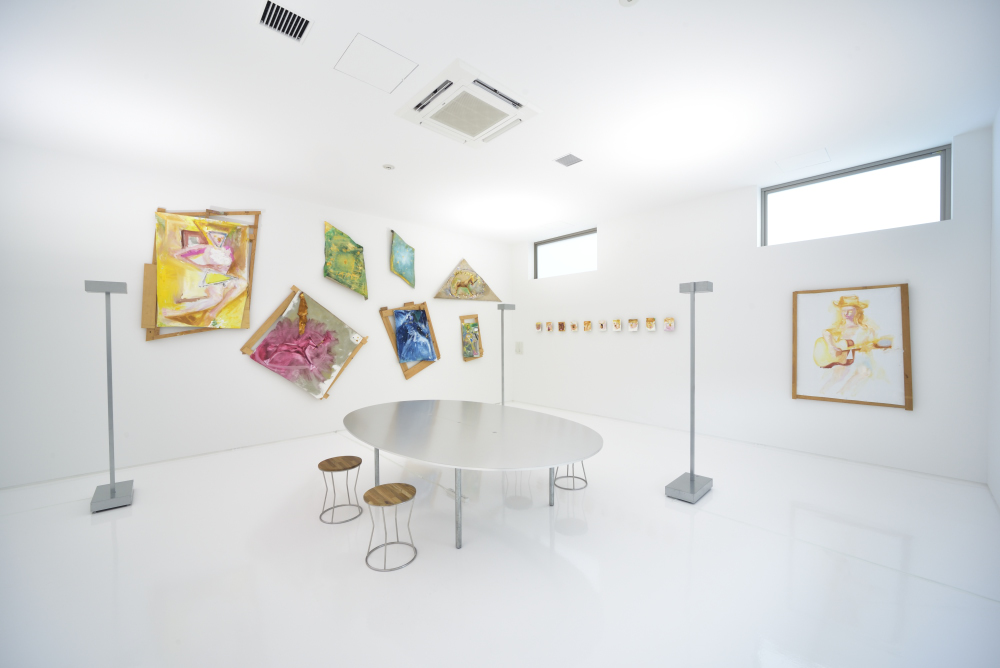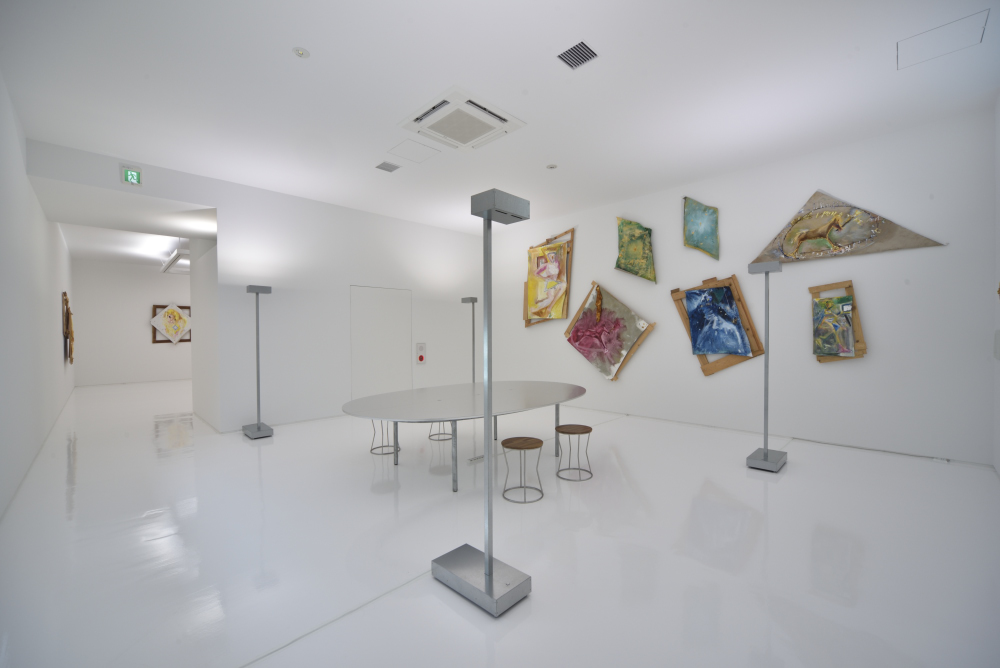Beautiful light fills us with visceral pleasure, but something that looks like shit can also give us pleasure.
‘Cause as we all know, beauty isn’t just about the external qualities of a thing or a person. A lot of times the fact that a certain quality is contained in something or someone that looks like shit makes it even more beautiful. That goes for Duchamp’s urinal, Warhol, van Gogh, Caravaggio, and Murakami. Because art isn’t about something being better or worse.
That’s why there’s such a fine line. My utopia is always right there next to the border. Bad paintings are made by outlaws! I think of the paintings in Love, More Awful! But More Beautiful, Because Painting Is All for Love as a family of the planet. Like a family, they live together in a jumble – they’re hanging on the wall, they’re resting on the floor, there are angels, skies, apples, nudes, and abstract paintings…fragments of stars…family…it’s a family of paintings! It’s a family of this planet on the border of beauty and shit. And there are some horses out there on the plain. Laughter.
Once upon a time, twice upon a time, thrice upon a time… there was a cowboy and a cowgirl.
Kobayashi Masato,
Tomonoura Studio, August 2016







